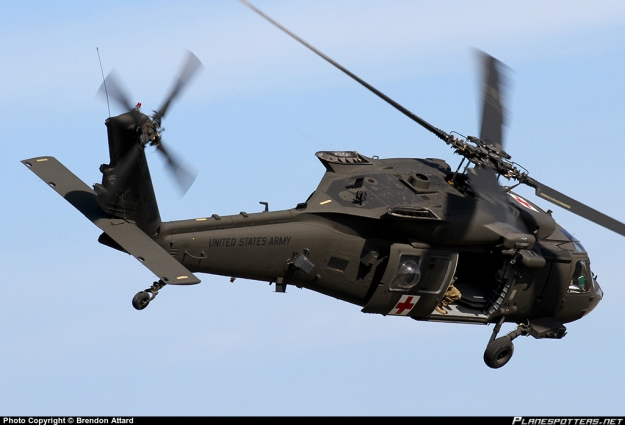Understanding the Mechanics and Design Behind Uh 60 Helicopters
The UH-60 helicopter, typically known as the Black Hawk, stands as a pinnacle of modern rotorcraft innovation, embodying a blend of robust engineering and complex technicians. As we peel back the layers of the UH-60's style, a world of detailed systems and thorough engineering comes to light.
History of UH-60 Helicopters
The history of UH-60 helicopters traces back to the late 1970s when the USA Military looked for a advanced and functional energy helicopter to change its aging fleet. In reaction to this need, the Sikorsky Airplane Firm established the UH-60 Black Hawk helicopter. Introduced in 1979, the UH-60 quickly came to be a staple in armed forces operations due to its impressive capacities.
The UH-60 was developed to master a selection of objectives, including army transportation, medical discharge, electronic war, and special procedures. Its capability to adapt to various roles made it a valuable property to the U.S. uh 60. Military and other army forces worldwide
Throughout the years, the UH-60 platform has actually undergone a number of upgrades and variations to boost its performance and maintain speed with advancing objective needs. These helicopters have actually seen comprehensive solution in disputes such as the Gulf War, Afghanistan, and Iraq, showcasing their dependability and flexibility in varied functional environments. The UH-60's abundant history is a testament to its long-lasting heritage as a leading energy helicopter.

Engine and Power Systems
Utilizing cutting-edge propulsion modern technology, UH-60 helicopters are outfitted with sophisticated engine and power systems to make sure ideal performance and integrity in a variety of operational circumstances. The UH-60, generally understood as the Black Hawk, is powered by two General Electric T700-GE-701D engines, each qualified of providing up to 1,940 shaft horse power. These turboshaft engines supply the needed thrust for the helicopter to perform its objectives successfully, including army transport, clinical emptying, and fight assistance.

Blades System and Aerodynamics
How do the rotor system and the rules of aerodynamics of UH-60 helicopters contribute to their functional efficiency and trip capabilities? The blades system of the UH-60 helicopter plays an essential duty in offering lift and propulsion.
The rules of aerodynamics also play a crucial role in the efficiency of UH-60 helicopters. The structured fuselage and blades blade design decrease drag, permitting the helicopter to achieve greater speeds and far better gas efficiency. The wind resistant design of the UH-60 likewise adds to its ability to run in diverse environmental problems, consisting of warm temperature levels and high elevations.
Avionics and Flight Control Solution

In its elaborate sychronisation with the blades system and the rules of aerodynamics of UH-60 helicopters, the avionics and trip control systems develop a critical network of modern technologies shaping the airplane's functional abilities. check my source In the UH-60, these systems include electronic screens, communication radios, GPS navigation, climate radar, and auto-pilot systems.
The flight control systems of the UH-60 are responsible for equating the pilot's inputs into the appropriate changes to the blades system, making sure stable trip and ability to move. These systems contain hydraulic actuators, servos, and computer systems that collaborate to regulate the primary and tail rotors, in addition to various other trip control surface areas. click here for more info By exactly taking care of the helicopter's trip characteristics, these systems make it possible for pilots to perform a variety of objectives, from transportation and search-and-rescue to deal with procedures, with precision and self-confidence.
Role and Applications in Air Travel
The duty and applications of avionics and trip control systems in aviation are integral to making certain the risk-free and efficient operation of airplane, including UH-60 helicopters. Avionics systems in UH-60 helicopters encompass a series of digital systems that aid in navigating, interaction, tracking, and regulating various airplane functions. These systems include electronic displays, autopilot systems, communication radios, GPS navigating tools, and weather condition radar. Trip control systems play a vital role in navigating the helicopter airborne, maintaining stability, and ensuring precise movements. The fly-by-wire modern technology used in modern UH-60 helicopters equates pilot inputs right into digital signals, which are after that analyzed by the flight control computers to adjust the aircraft's control surfaces. Furthermore, these systems integrate safety and security attributes such as autopilot modes, terrain awareness cautioning systems, and stability enhancement systems to improve the total safety and security and functional capacities of the UH-60 helicopters in various missions, including troop transport, clinical discharge, search and rescue, and airborne firefighting.
Conclusion
In verdict, the UH-60 helicopter is a versatile aircraft with an abundant history and progressed engineering. Its engine and power systems, rotor system, aerodynamics, avionics, and trip control systems all function with each other to make it a efficient and trustworthy equipment.
In its elaborate coordination with the blades system and the rules of aerodynamics of UH-60 helicopters, the avionics and flight control systems form a vital network of technologies shaping the airplane's basics functional capacities.The flight control systems of the UH-60 are responsible for translating the pilot's inputs into the ideal adjustments to the rotor system, guaranteeing steady trip and maneuverability. Avionics systems in UH-60 helicopters include a variety of electronic systems that aid in navigating, communication, monitoring, and managing different aircraft functions. In addition, these systems incorporate safety functions such as autopilot settings, terrain recognition alerting systems, and security augmentation systems to improve the total safety and security and functional capacities of the UH-60 helicopters in various goals, including troop transport, clinical discharge, search and rescue, and airborne firefighting.
Its engine and power systems, blades system, the rules of aerodynamics, avionics, and trip control systems all work together to make it a trustworthy and effective machine.